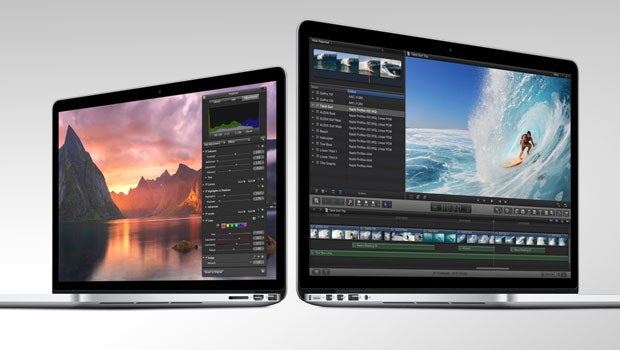MacBook Pro 2014 Haswell vs 2013

One of the key updates of the October 2013 Apple launch was a new pair of MacBook Pro models. The screen sizes haven’t changed – you still choose between 13-inch and 15-inch models. But there are more than just a few changes to take into account.
Here are the most important of the lot.
Haswell power, and battery power
As expected, both the 13-inch and 15-inch MacBook Pro models use Intel Haswell generation processors – either Intel Core i5 or i7. These offer more power than last year’s MacBook Pro models, but the most important change is arguably the battery efficiency of Haswell.
The 15-inch MacBook Pro is now rated to last up to eight hours, up an hour from last year’s 15-inch version. The 13-inch lasts for up to nine hours, as it’s a slightly less high-power laptop and, of course, has a smaller screen.
![]()
13-inch edition is smaller than before
Apple has managed to shave a few millimetres off the body of the 13-inch MacBook Pro. It’s now 18mm thick, down from 19mm in the previous edition.
The new laptop is also lighter – and this time the difference is arguably more significant. The new laptop weighs 1.57kg, down from 1.62kg last year.
It’s still not as light as the 13-inch MacBook Air, which weighs 1.35kg. But it’s getting closer.
Wi-Fi has been bumped-up to 802.11ac
The last MacBook Pro models used the 802.11n Wi-Fi standard, but this has now been upgraded to the ‘ac’ standard. This offers better range, and much faster transfer rates.
Most of you probably don’t have an ac-compatible router yet – they’re fairly new and still sell at a premium – but if you have a Wi-Fi n router, you should still notice some improvement (assuming performance isn’t perfect already.
For more information, check out our feature on the benefits of 802.11ac![]()
Flash internal storage is now PCI-e
When Apple launched its Haswell-generation MacBook Air models, it moved to PCI-e SSD storage – instead of the SATA type used in previous generations of Apple laptops.
Predictably, the MacBook Pro models have made the same move. The difference is simple – PCI-e is faster than SATA, allowing for faster transfer rates and stopping the connector type from being a bottleneck.
![]()
Both now have Thunderbolt 2 ports
The new MacBook Pro laptops use Thunderbolt 2 ports, instead of the musty old Thunderbolt of the last-generation models. We jest – it’s still one of the most advanced connections you can get.
The socket looks exactly the same as the previous Thunderbolt type, and it’s backwards-compatible with any old Thunderbolt gear.
There are some differences, though. Thunderbolt 2 is certified to offer the bandwidth to support multiple 4K displays at the same time.
![]()
Both have been given a price drop
A Retina display MacBook Pro is naturally not going to come cheap. However, the prices have come down a little.
The 13-inch Pro model has been given a $200 price drop – it now starts at $1299. Further up the range, the 15-inch model starts at $1999. We’ll be back with clarification of the UK prices as soon as possible.
Impressions
The MacBook Pro late-2013 model is a safe, predictable upgrade to the series. It doesn’t take any risks, but that’s probably no bad thing. And this time around, both Retina models are significantly cheaper – making them less ‘pie in the sky’.


